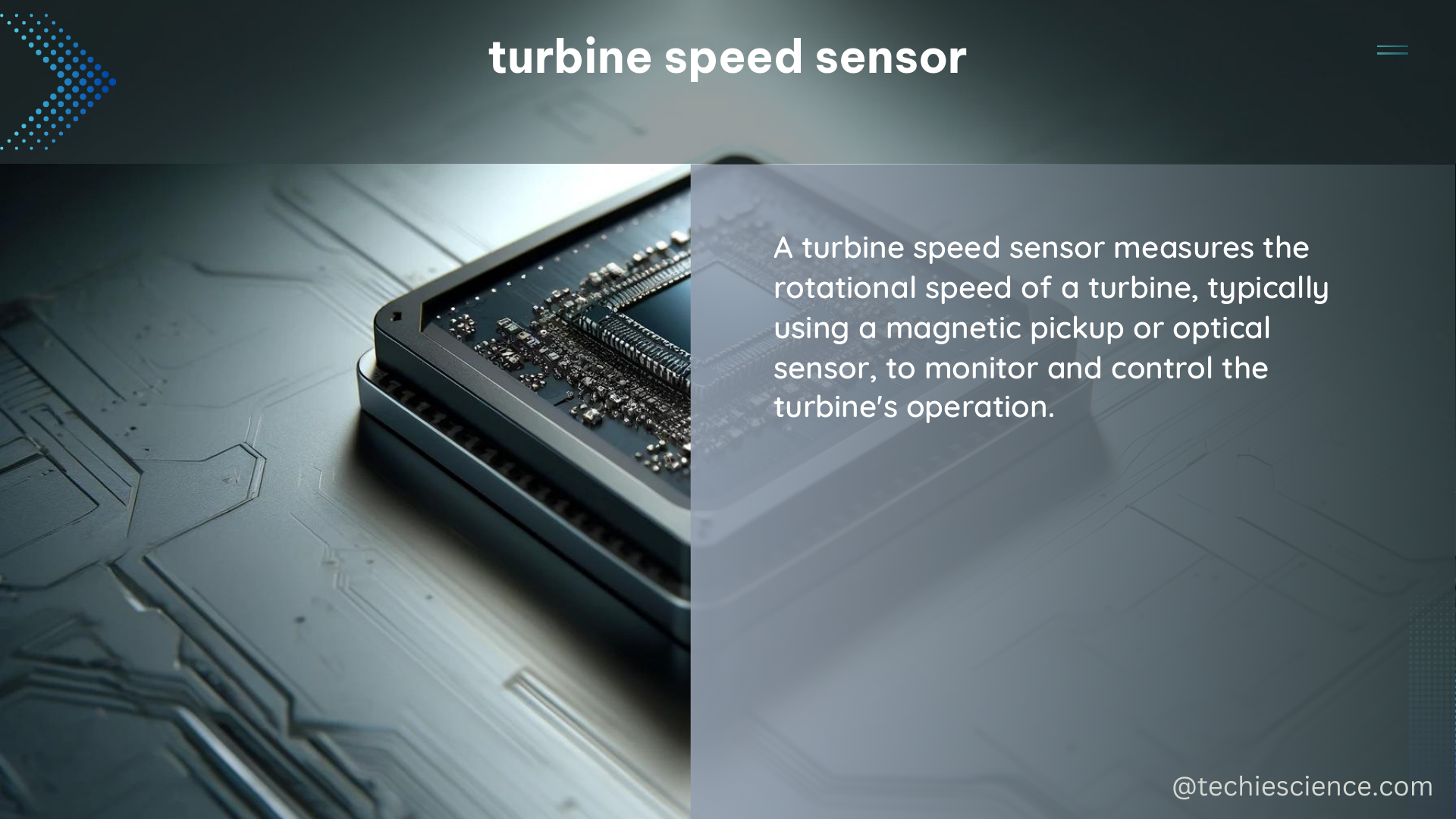The turbine speed sensor is a critical component in various turbine-based systems, including gas turbines, wind turbines, and steam turbines. Its primary function is to accurately measure the rotational speed of the turbine, providing essential data for control, monitoring, and safety purposes. The sensor’s performance significantly impacts the overall system’s efficiency, reliability, and maintenance requirements.
Understanding Turbine Speed Sensors
Turbine speed sensors are designed to detect the rotational speed of the turbine shaft, which is a crucial parameter for optimizing system performance. These sensors utilize non-contact measurement techniques, such as proximity sensors, Hall effect sensors, and magnetic pickups, to capture the turbine’s rotational speed without physically interfering with the shaft.
Sensor Types
-
Proximity Sensors: These sensors use an electromagnetic field to detect the presence of a metallic target, such as a gear or a toothed wheel, attached to the turbine shaft. As the target passes the sensor, it causes a change in the electromagnetic field, which is then converted into a digital or analog signal.
-
Hall Effect Sensors: These sensors rely on the Hall effect, where a magnetic field is used to generate an electrical voltage. As the turbine shaft rotates, the magnetic field generated by a permanent magnet or an electromagnet is modulated, producing a voltage signal that corresponds to the shaft’s rotational speed.
-
Magnetic Pickups: Magnetic pickups, also known as inductive sensors, use a coil of wire wrapped around a magnetic core to detect the changes in the magnetic field caused by the rotation of a ferromagnetic target, such as a gear or a toothed wheel, on the turbine shaft.
Sensor Outputs
Turbine speed sensors can provide either an analog or a digital output signal. Analog signals, such as voltage or current, are proportional to the rotational speed, while digital signals are typically in the form of pulses, where the frequency of the pulses corresponds to the shaft’s rotational speed.
Digital pulse signals are often preferred due to their immunity to electrical noise and the ease of signal processing, especially in modern digital control systems.
Sensor Specifications
-
Frequency Response: The sensor’s frequency response must match the turbine’s speed range. For example, a gas turbine sensor may need to handle frequencies from a few Hz during start-up to several kHz during full-speed operation.
-
Accuracy: The sensor’s accuracy is typically specified as a percentage of the full-scale output or as an absolute error. For critical applications, sensors with high accuracy (e.g., ±0.1%) are preferred to ensure precise speed measurement.
-
Resolution: The sensor’s resolution is the smallest change in speed that can be reliably detected. It is often expressed in terms of pulses per revolution or frequency units (e.g., Hz).
-
Environmental Conditions: The sensor must be able to operate within the expected environmental conditions, such as temperature, humidity, vibration, and electromagnetic interference, to ensure reliable performance in the turbine’s operating environment.
DIY Turbine Speed Sensor

Building a DIY turbine speed sensor can be a rewarding project, providing a deeper understanding of the sensor’s principles and the opportunity to customize the design to specific requirements. Here’s a step-by-step guide to creating a simple magnetic pickup sensor:
-
Select a Magnet: Choose a suitable permanent magnet with a strong magnetic field and a size that can be easily mounted on the turbine shaft. Neodymium magnets are a popular choice due to their high magnetic strength.
-
Create a Coil: Wind a coil of insulated wire around a non-magnetic former, such as a plastic or cardboard tube. The number of turns and the coil’s diameter will depend on the desired sensitivity and frequency response. As a general guideline, a coil with 100 to 1000 turns and a diameter of 5 to 20 mm can be a good starting point.
-
Mount the Coil and Magnet: Securely mount the coil and magnet so that the magnet passes close to the coil during rotation. The gap between the magnet and coil should be as small as possible, typically in the range of 0.5 to 5 mm, to maximize the sensor’s sensitivity.
-
Connect the Coil: Connect the coil to a suitable signal conditioning circuit, such as an op-amp-based amplifier or a microcontroller input pin. The signal conditioning circuit should provide the necessary amplification, filtering, and signal shaping to ensure a clean and reliable output signal.
-
Calibrate the Sensor: Calibrate the sensor by rotating the shaft at a known speed and adjusting the signal conditioning circuit to provide a stable output signal. This step is crucial to ensure accurate speed measurement.
By following these steps, you can create a functional DIY turbine speed sensor that can be used for various applications, such as monitoring the performance of small-scale turbines or as a learning tool for understanding the principles of turbine speed measurement.
Conclusion
The turbine speed sensor is a critical component in turbine-based systems, playing a vital role in ensuring optimal performance, efficiency, and safety. Understanding the technical specifications, sensor types, and the principles of DIY sensor construction can help engineers, technicians, and hobbyists alike to better design, maintain, and troubleshoot turbine systems.
References
- Performance Prediction and Simulation of Gas Turbine Engine Components
- CONTROL VALVE HANDBOOK – Emerson
- International Performance Measurement and Verification Protocol
- Novel operational condition monitoring techniques for wind turbine brake systems
- DEPARTMENT OF DEFENSE STANDARD PRACTICE – CADE

The lambdageeks.com Core SME Team is a group of experienced subject matter experts from diverse scientific and technical fields including Physics, Chemistry, Technology,Electronics & Electrical Engineering, Automotive, Mechanical Engineering. Our team collaborates to create high-quality, well-researched articles on a wide range of science and technology topics for the lambdageeks.com website.
All Our Senior SME are having more than 7 Years of experience in the respective fields . They are either Working Industry Professionals or assocaited With different Universities. Refer Our Authors Page to get to know About our Core SMEs.